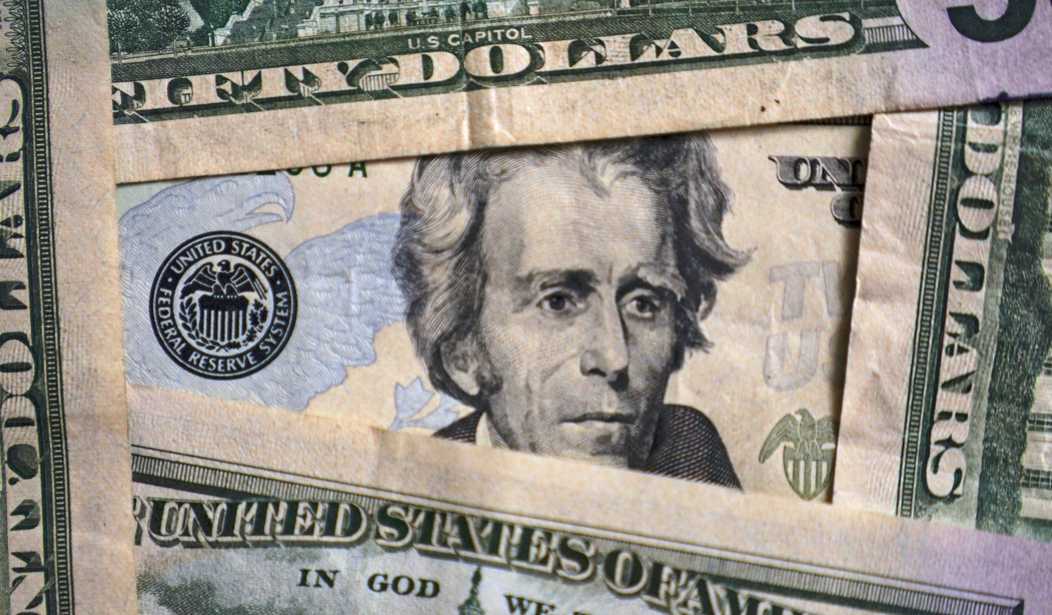Burdened with $34.5 trillion in national debt that is currently growing by $1 trillion every 100 days, the U.S. economy is headed for disaster. It falls on the next administration to change that trajectory while also introducing policies that increase and broaden economic growth and wealth creation for everyone. Changing course is not easy, but people are waking up rapidly to the shocking reality that we are on an unsustainable course. Those who recognize that financial collapse is at our door can’t unsee it and they will embrace fundamental change from unconventional leadership.
Correcting courses requires both the acceleration of private-sector economic growth and a reduction in the public sector.
What holds back the U.S. economy from achieving average GDP growth rates above 3%, which were common in every decade after World War II up until the turn of the 21st century, is the growth of government spending and government debt.
The widely acclaimed 2009 analysis by Harvard economics professors Carmen Reinhart and Ken Rogoff—which concluded that national debt levels above 90% of GDP significantly reduce a country’s economic growth rate—explains in part why U.S. economic growth has become more anemic than previously.
The deficit spending of the Obama administration, which broke through that 90% debt-to-GDP ratio in 2010 with 3 years of trillion-dollar deficits, marked the steepening trajectory of our path to insolvency. The U.S. debt-to-GDP ratio now exceeds 122%. Our current $34.5 trillion national debt has grown eightfold in the sixteen years since George W. Bush passed the presidential mantle to Barack Obama.
What is increasingly troubling is the extent to which the U.S. government is borrowing new money to service old debt. And that borrowing is adding over $11 billion to the national debt every day. And that additional $11 billion to the national debt daily is financed with additional borrowing. And so on… until the compounding of national debt ends in financial collapse. Having the world’s reserve currency notwithstanding, the United States cannot escape this fate unless it dramatically changes course.
Recommended
Reducing the U.S. deficit and total national debt is uniquely challenging because 65% of the federal budget is mandatory spending on Medicare, Medicaid, Social Security, Veterans benefits, and welfare programs. Other categories, such as interest on the national debt, which is likely to reach $1 trillion in 2025, and defense spending, which is about $875 billion, are miscategorized as being discretionary. It’s axiomatic that avoiding national debt default and defending the country is mandatory. So, what is left in truly discretionary federal spending is about 7.5% of the 6.5 trillion federal budget. And even if all that remaining 7.5% of the budget in the so-called truly discretionary category were eliminated, the U.S. would still have a $1.5 trillion deficit as it stands now.
What is needed in addition to spending reductions in some mandatory entitlement programs is finding new sources of revenue. Our massive oil and gas reserves are one of America’s greatest comparative advantages over other nations. The U.S. is now number one among nations in both natural gas and oil reserves at some 264 billion barrels.
Oil and gas are a cheaper and more reliable source of energy than wind and solar, so it is to our comparative advantage to rely more heavily on the former. More reliance on oil and gas hydrocarbons means more self-reliance and less reliance on China, which produces more than 75% of the world’s solar photovoltaic panels and supplies some 80% of the world’s lithium battery cells. In addition, the extraction of hydrocarbons in the U.S. could bend down the trajectory of deficits if a royalty of $10 to $15 on every barrel produced in America went to deficit reduction.
Repatriating manufacturing should be pursued in every industry and sector in which the U.S. has a favorable comparative advantage, such as specialized capital-intensive labor.
The United States ranks first overall in the world in five of the twelve economic pillars: entrepreneurial innovation, labor markets, agriculture, natural resources, and the financial system. All these would benefit from appropriate regulatory relief. And with more profitable entrepreneurial startups, tax revenues are also increased, which goes toward deficit and debt reduction.
Economic growth is always an important driver of deficit and debt reduction because it increases tax revenues. As it turns out there are four main drivers of economic growth: land, labor, capital, and entrepreneurship.
To raise capital to pay down the national debt and bend the debt trajectory toward reduction, the federal government could sell half of its 640 million acres of public land and take in over one trillion dollars. All land sales should be limited to Americans and friends of America who plan to use the land for productive purposes.
Lowering the cost of capital is an outcome of inflation reduction. This creates a virtuous cycle of lowering the cost of debt service on the national debt, shrinking the deficit while also stimulating economic activity and raising tax revenue.
While it would be an incredibly positive development if the total U.S. debt is dramatically reduced, the United States needs only to stabilize the national debt at slightly lower levels by undertaking some of these measures while also arriving at a balanced budget. Achieving this is no easy task, but it would go a long way in restoring confidence in the U.S. dollar and American leadership.
Scott Powell is an economist and senior fellow at Discovery Institute and a member of the Committee on the Present Danger China. His timeless book, Rediscovering America, was a #1 Amazon new release in history for eight straight weeks.

























Join the conversation as a VIP Member